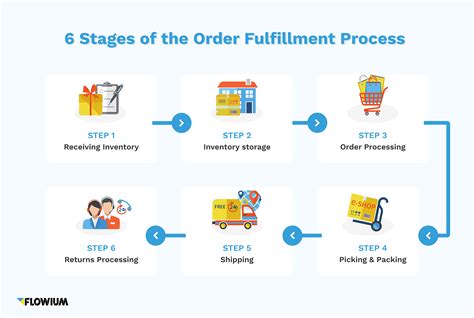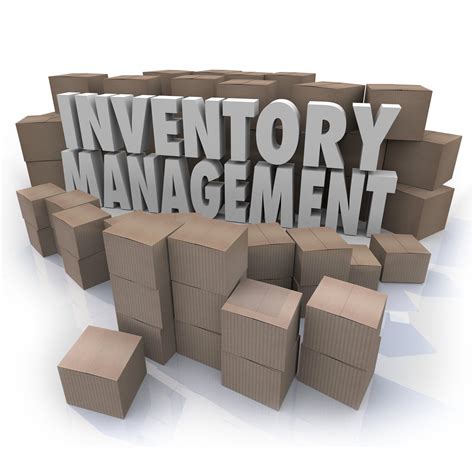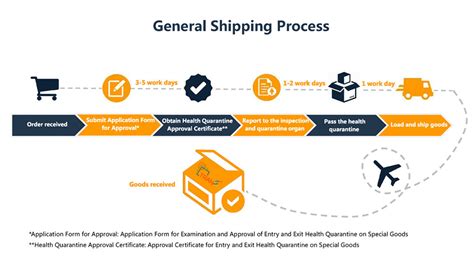Understanding the Fulfillment Business: An Overview
If you are looking to start a retail business or an online store, one of the most critical aspects of your operation is fulfillment. Fulfillment is the process of delivering products to consumers. The process can be holistic, starting from receiving customer orders, packaging products, and shipping out the orders. This process requires exceptional organizational skills, and businesses must ensure that every step is executed smoothly to maintain a positive brand image, repeat customers, brand loyalty, and satisfaction.
Once the consumer makes an order from your store, the process of fulfillment kicks in. The process starts when the business receives the customer order, and it continues until the order has been shipped out successfully. One of the most significant advantages of using fulfillment services is that it offers businesses a great deal of flexibility. Businesses can choose to perform fulfillment operations in-house or outsource the entire process to a fulfillment provider.
Moreover, businesses can choose to work with one fulfillment provider or multiple providers, depending on their business needs. One of the most important determinants of whether to outsource the fulfillment process or not is the size of the business. Small businesses can manage to handle fulfillment operations in-house because they are still small-scale. As the business grows, more orders come in, and handling fulfillment in-house becomes more challenging to maintain efficiency and service quality.
Outsourcing fulfillment operations eliminates the need to invest in warehousing, labor, and technology to manage the process, and thus, it saves businesses time and money. Moreover, outsourcing allows businesses to focus on other areas of the business, such as marketing, product development, and customer engagement.
The fulfillment process involves several steps that must be executed with precision to ensure efficiency and effectiveness. These steps include order receiving, inventory management, picking and packing, labeling, and shipping out. A breakdown in any of these processes can lead to order processing delays, order errors, loss of revenue, and ultimately, customer dissatisfaction.
Therefore, businesses must ensure that they choose a reliable and reputable fulfillment provider to partner with. Some of the key factors to consider when choosing a fulfillment provider include location, service quality, technology, scalability, transparency, and price. These factors determine how efficient and effective the fulfillment operations will be.
As your business grows, you will be required to scale up your fulfillment operations to meet the increasing demand. This requires strategic planning and investing in the right technology and workforce. The technology you choose to invest in should match the size of your business, and it should support the entire fulfillment process. It is essential to track the performance of your fulfillment operations regularly, identify areas that need improvement, and implement solutions to optimize the process continually.
In conclusion, understanding the fulfillment business and its role in your business success is critical. It is essential to choose the right provider, technology, and workforce to ensure a smooth and efficient operation. As your business grows, so does your fulfillment operations, and investing in the right technology and strategic planning is key to success.
Identifying Your Target Market and Niche
Starting a fulfillment business can be challenging, especially when it comes to identifying your target market and niche. In order to run a successful fulfillment business, it’s crucial to know your target market and their specific needs. Here, we’ll discuss some tips on how to identify your target market and niche for your fulfillment business.
Research and analyze the market: Before launching your fulfillment business, it’s important to research and analyze the market to identify your target market. This involves assessing factors such as industry trends, competition, and market size. Conducting market research will provide you with valuable insights and help you determine your target market and niche. You can use various sources such as industry reports, competitor analysis, and customer surveys to gather information.
Identify customer needs: Once you have conducted market research, identify the specific needs of your target customers. For example, if your target market is small businesses, you may find that they require more personalized and affordable fulfillment solutions. By understanding the needs of your target market, you’ll be able to tailor your services and marketing efforts to meet those needs.
Consider demographic and psychographic factors: Demographic factors such as age, gender, and location can help you define your target market. For example, if you’re targeting a specific age group, you may want to consider offering services that cater to their specific needs and preferences. Psychographic factors such as lifestyle, interests, and values can also help you identify your target market. For instance, if your target customers are environmentally conscious, you may want to offer eco-friendly packaging options.
Assess competition: Knowing your competitors and their strengths and weaknesses can help you identify a niche for your fulfillment business. By analyzing the services offered by your competitors, you can identify areas where you can differentiate your business and provide unique value to your target market. For instance, if your competitors don’t offer customized packaging options, you can specialize in providing those services.
Consider location: Location can also play a role in identifying your target market and niche. If you’re operating in a specific geographic location, you may want to consider offering fulfillment services that cater to the unique needs of that area. For example, if you’re located in a city with a large e-commerce market, you may want to specialize in fast and efficient delivery services.
Stay up to date with industry trends: As with any industry, the fulfillment industry is constantly evolving, and it’s important to stay up to date with new trends and developments. Keep a lookout for emerging trends and technologies that can help you provide better services to your customers. For instance, with the rise of e-commerce, offering multi-channel fulfillment services can be a valuable niche for your fulfillment business.
Identifying your target market and niche is a crucial step in starting a successful fulfillment business. By researching and analyzing the market, identifying customer needs, assessing competition, considering demographic and psychographic factors, and staying up to date with industry trends, you’ll be able to identify a profitable niche and provide valuable services to your target market.
Finding the Right Location and Equipment for Your Fulfillment Center
Starting a fulfillment business requires a clear understanding of your business needs, including the right location and equipment for your fulfillment center. Your location and equipment choices will have a significant impact on your productivity, customer satisfaction, and overall success. Here are some tips on how to find the right location and equipment for your fulfillment center:
Location
The location of your fulfillment center is crucial to the success of your business. When searching for a location, consider the following:
Proximity to Customers
Choose a location that is convenient for your customers. This will help reduce shipping costs and delivery times. If you have a local customer base, consider setting up your fulfillment center in that area. Additionally, you may want to consider partnering with a third-party logistics (3PL) provider to use their facilities. This will allow you to take advantage of their established network and competitive pricing.
Infrastructure
Ensure that the location you choose has reliable infrastructure, including high-speed internet, sufficient power supply, and water supply. This will ensure that your fulfillment center runs smoothly and efficiently.
Cost Considerations
Consider the cost of the location and weigh it against your budget. Look for a balance between the location’s cost and its proximity to major transportation routes, labor pools, and customers.
Equipment
Equipping your fulfillment center with the right tools and technologies is crucial to your success. Here are some essential equipment to consider:
Warehouse Management System (WMS)
A Warehouse Management System (WMS) is a software application designed to streamline inventory management, order fulfillment, and shipping. Investing in a good WMS will make your day-to-day operations run smoothly and efficiently.
Shipping Supplies
Stock up on shipping supplies so you can meet the needs of your customers. This includes shipping labels, packing slips, boxes, bubble wraps, and other packing materials.
Pick and Pack Stations
A pick and pack station is a specialized workstation where your staff picks the items from inventory and packs them for shipping. Ensure that each station is equipped with the necessary tools, such as handheld scanners, packing slips, and weighing scales.
Material Handling Equipment
Invest in material handling equipment such as pallet jacks, lift trucks, and conveyors. This equipment will help move your inventory and packages quickly and efficiently, and reduce the risk of workplace injuries.
Security System
Ensure the safety and security of your inventory by installing a reliable security system. This includes CCTV cameras, alarms, and access control systems.
Choosing the right location and equipment for your fulfillment center requires careful consideration. By investing time and resources into finding the right location and equipment, you can optimize your operations and achieve the highest level of customer satisfaction.
Building a Marketing Strategy to Promote Your Fulfillment Business
Marketing is the branch of business that deals with creating, communicating, and delivering a product or service to meet the needs of a target market. It encompasses various activities that are used to promote and advertise your business to customers. A solid marketing strategy is crucial in building a successful business, and this applies to a fulfillment business as well. Here are some tips to help you develop a marketing strategy to promote your fulfillment business.
Define Your Target Market
The first step in developing a marketing strategy is to identify your target market. This involves determining the types of businesses that could benefit from your fulfillment services. Do you cater to small businesses or large corporations? Are your services more suitable for e-commerce businesses or brick and mortar stores? Answering these questions will help you focus your marketing efforts on the right people.
Create a Brand Identity
Your brand is your business’s personality, the way that customers perceive you, and sets you apart from competitors. A strong brand identity helps you establish a lasting relationship with customers. To create a brand identity, you should develop a business name, logo, mission statement, and a tagline to express your business values and personality. Choose colors, fonts, and imagery that reflect your brand and use them consistently across all marketing channels.
Build a Website
Your website is a critical part of your marketing strategy. It is a representation of your business on the internet and provides an opportunity to attract customers, capture leads, and make sales. Your website should be user-friendly, easy to navigate, and have a professional design. Important things to include are a description of your services, customer testimonials, and a call to action (CTA) that encourages customers to take action on your site.
Use Search Engine Optimization (SEO)
SEO is the practice of increasing the quantity and quality of traffic to your website through search engines such as Google or Bing. SEO is an essential part of digital marketing that can help drive more organic traffic to your website, leading to more sales. Some SEO strategies you can use include optimizing your website structure, using keywords in your content, creating backlinks to your website, and improving your website speed and security.
Create a Social Media Presence
Social media is a powerful tool that can help you promote your business and reach a wider audience. Social media platforms such as Facebook, Instagram, or LinkedIn allow you to connect with customers, engage with them, and promote your business. To use social media effectively, you need to identify the platform that your target market uses, create engaging visual content, and post consistently. You can also use paid advertising on social media to target a specific audience.
Attend Trade Shows and Conferences
Attending trade shows and conferences with a related industry is an excellent way to promote your fulfillment business. These events provide an opportunity to showcase your services, network with potential clients, and learn about industry trends. You can also consider sponsoring or exhibiting at the event to gain more visibility for your business.
In conclusion, developing a solid marketing strategy is essential in building a successful fulfillment business. By defining your target market, creating a brand identity, building a website, implementing SEO, creating a social media presence, and attending industry events, you can effectively promote your business and attract more customers. Remember that marketing is an ongoing process that requires continuous effort and adaptation to stay relevant.
Establishing an Efficient Order Fulfillment Process

One of the most critical aspects of running a successful fulfillment business is establishing an efficient order fulfillment process. Without a well-designed order fulfillment process, your business may struggle to keep up with the demand, leading to delays, errors, and potentially lost customers. Here’s a guide to help you establish an effective and efficient order fulfillment process:
Step 1. Develop a Product Receiving Protocol
The first step in the order fulfillment process is receiving the products from the manufacturer or supplier. Establishing a strong protocol for receiving these products is critical to ensure that all products are received accurately, inspected for any damage, and logged into inventory. Consider implementing a barcode or RFID tracking system, which can quickly identify products during the receiving process and help ensure that everything is in order before moving on to the next step.
Step 2. Efficient Inventory Management

The next step is keeping track of the inventory and managing it efficiently. An inventory management system can prove to be very helpful in keeping track of inventory levels, making sure that there is enough stock available to fulfill orders, and restocking products when needed. Commonly used inventory management systems can also provide useful statistics on best-selling items, which can help you with decision-making processes such as replenishing high in demand items and will give you a holistic view of your stock, avoiding over and understocking.
Step 3. Develop a Pick and Pack System
The pick and pack process is crucial in fulfilling the received orders, and a well-oiled picking and packing system will mean quick order fulfillment, happy customers, and efficient handling of your warehouse staff. Make sure to develop a picking and packing system that is easy to use and avoids frequent errors to save time. A common technique in this process is by batching, in which products are picked in bulk. If someone looks for various products across shelves, it adds on to the time and reduces the accuracy of the orders, so batching by minimizing the number of times someone has to walk to pick different products becomes necessary.
Step 4. Implement a Shipping Process

Once the orders are packed and ready for shipment, you need to have a reliable shipping process to make sure that your customer receives the order on time and in good condition. Different shipping carriers have different policies and delivery terms you can choose from. Utilizing modern shipping software tools and carriers with reasonable pricing enables you to ship consistently while minimizing costs.
Step 5. Track and Analyze Performance Metrics

Finally, establishing relevant metrics and reviewing performance statistics can help you identify areas of the order fulfillment process that require improvement and help you understand how your business is operating. Several metrics can be established, like order fulfillment time, the accuracy of orders, picking and packing efficiency, or inventory levels. It helps in constantly reassessing your business to identify where you may be spending too much time or money and identify any bottlenecks or potential problem areas before they start affecting the customer experience.
Establishing an efficient order fulfillment process is essential to running a successful fulfillment business. Make sure you continue to reassess your process and performance metrics in response to industry changes and customer requirements to ensure that your business continues to operate smoothly and provides high-quality services that your customers will want to return to.


